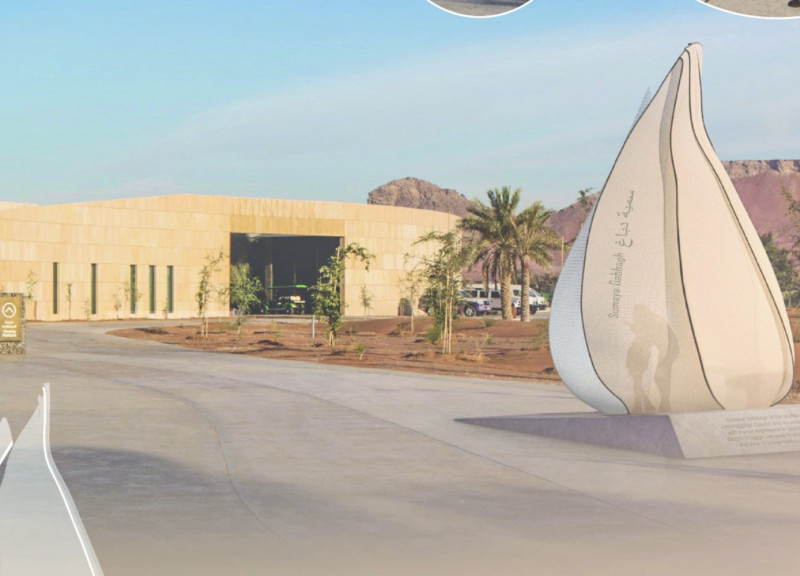5 key facts about this project
"The Seed," designed by Sumaya Dabbagh, is an educational and interactive street sculpture at the Mleiha Archaeological Center. The design reflects themes of growth and resilience while recognizing the role of women in architecture. The concept compares women’s contributions to that of a seed, which can inspire change and nurture new ideas. The sculpture is not only visually appealing but also serves as a conversation starter, inviting visitors to engage with the cultural history of the site.
Conceptual Framework
The sculpture features an organic interlocking form that invites exploration. This design approach allows for a connection between visitors and the landscape. The flowing shapes encourage movement and contemplation, enhancing the experience of the archaeological site. The design emphasizes relationship and interaction, allowing people to engage with both the sculpture and the surrounding environment.
Material Composition
A TPFE Yarn Tensile Fabric System is used in the sculpture's construction. This material gives protection from the weather and allows air to flow through, ensuring comfort in various climatic conditions. It provides necessary shade from direct sunlight, making the space usable at any time of day.
Also included are translucent acrylic panels. These panels play an important role in the design by allowing natural light to filter through while maintaining a connection to the surrounding landscape. As light changes throughout the day, the panels create a dynamic visual experience, enhancing the sculpture’s presence.
Cultural Narratives
An important detail in the design is the bilingual embroidery of Sumaya Dabbagh's name in both Arabic and English. This not only acknowledges her work but also fosters a dialogue about cultural representation in architecture. This detail highlights the need for inclusivity and diversity, aiming to inspire a broader understanding of the challenges women face in this field.
The combination of natural forms and thoughtful materials culminates in a distinctive experience. Visitors can appreciate the balance between protection and openness, as well as the connection between architecture and nature. This invites them to reflect on the narratives embedded in the space.



















































